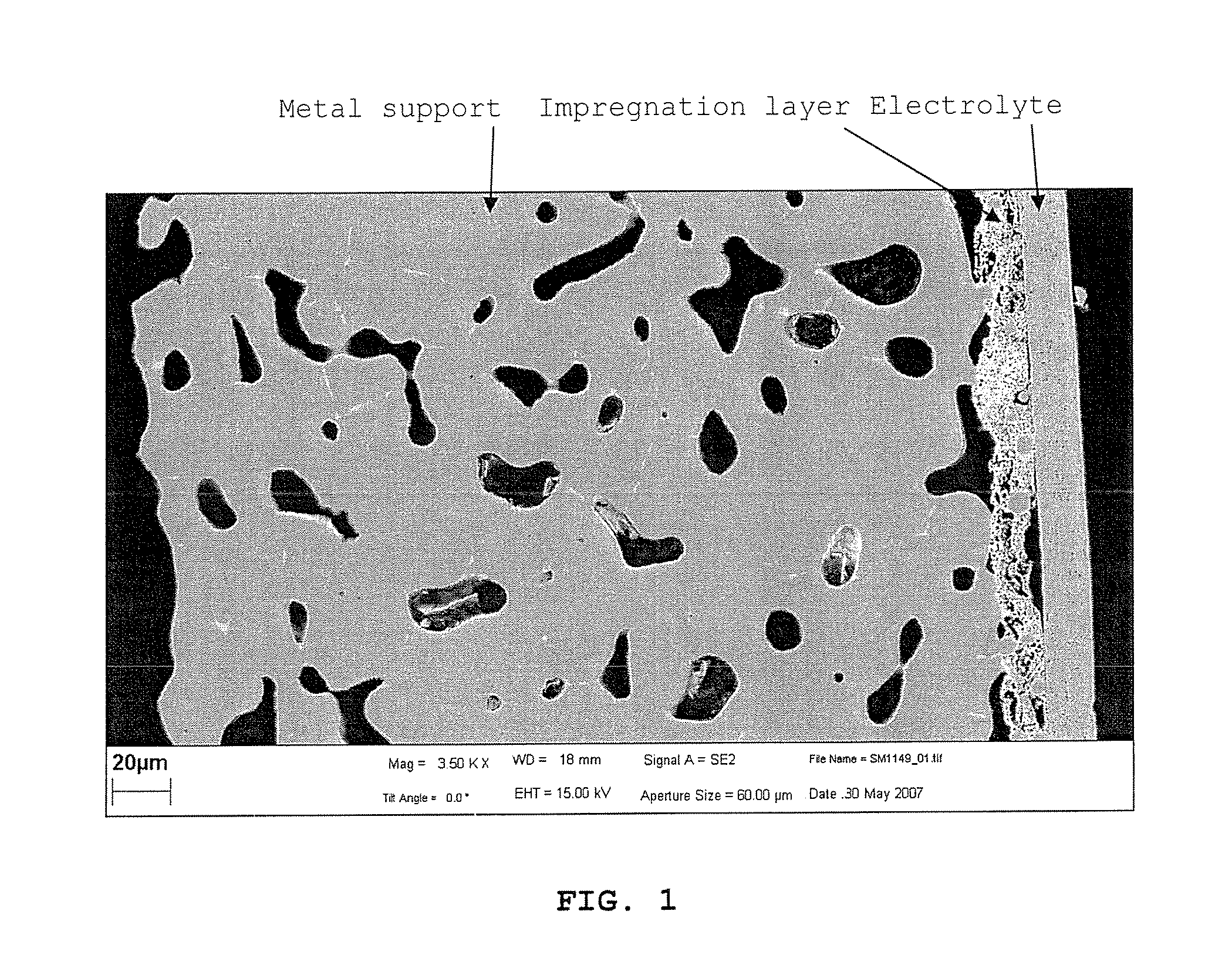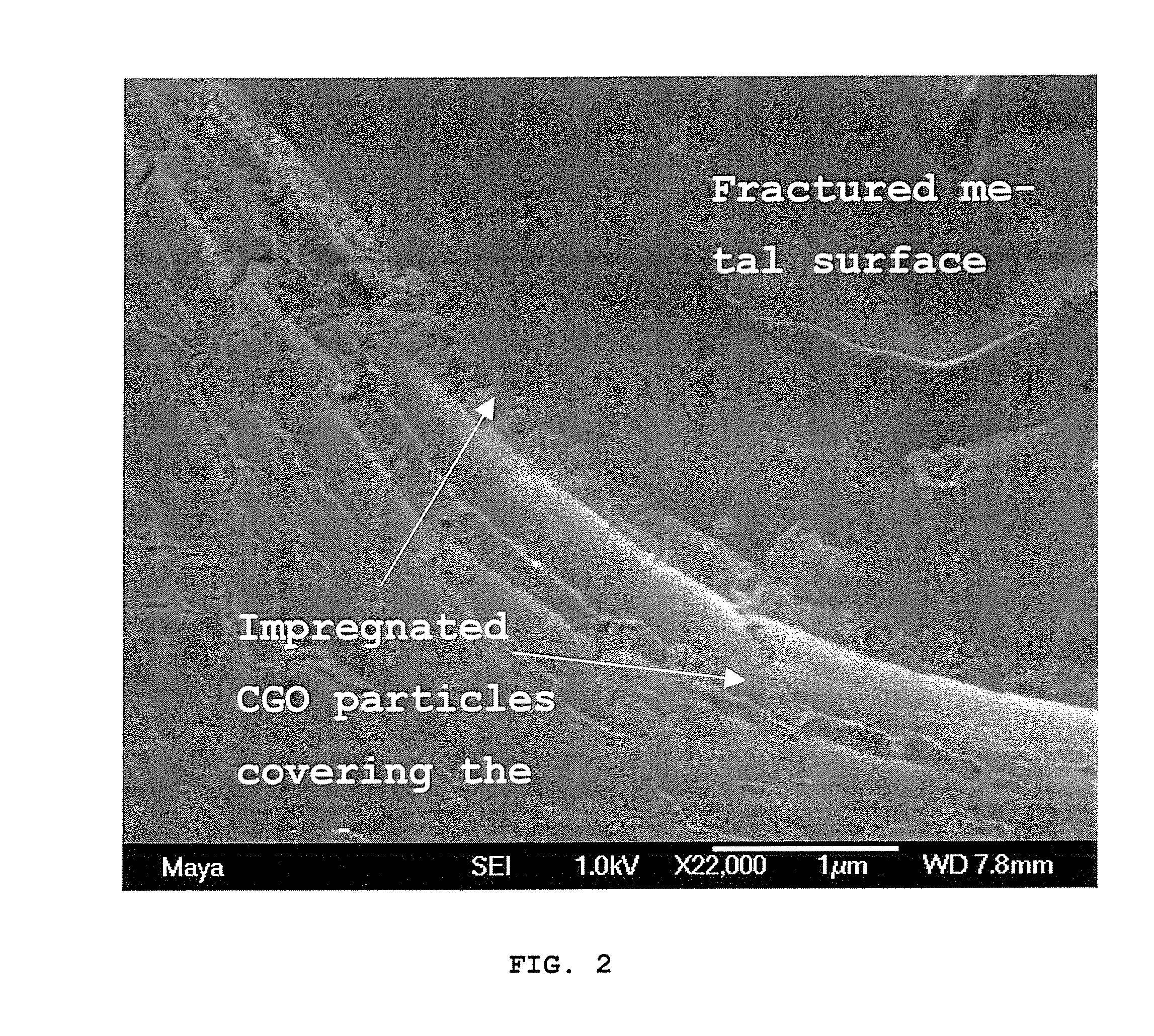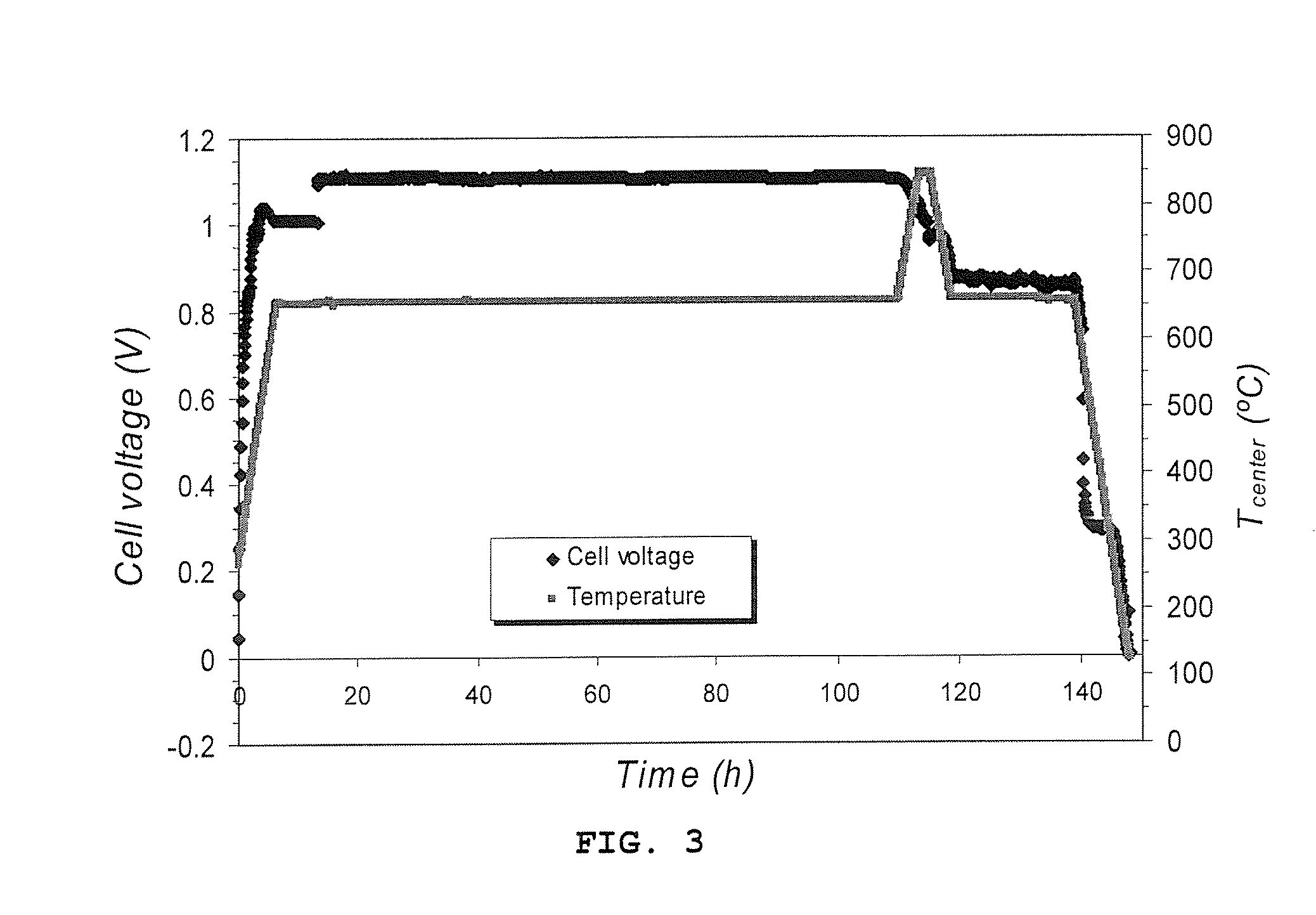Ceria and stainless steel based electrodes
a technology of stainless steel and electrodes, applied in the direction of cell components, conductors, electrochemical generators, etc., can solve the problems of unexpected high performance, achieve the effects of reducing calcination temperature, preventing oxide scale formation (corrosion), and reducing calcination surface area
- Summary
- Abstract
- Description
- Claims
- Application Information
AI Technical Summary
Benefits of technology
Problems solved by technology
Method used
Image
Examples
example 1
[0092]The following procedure was used to fabricate the infiltration solution which was used to fabricate a metal-supported cermet SOFC anode.[0093]1. An ethanol solution (10 g ethanol) containing 0.8 moles / liter cerium nitrate and 0.2 moles / liter gadolinium nitrate was prepared.[0094]2. 1 g Pluronic P123 surfactant was dissolved in the nitrate solution at room temperature.[0095]3. (Optional) Two solutions are made separately. One with the cerium and gadolinium nitrates and one with the Pluronic P123 surfactant. The solutions are mixed when the species are completely dissolved in ethanol.[0096]4. (Optional) Extra surfactant (e.g. Triton X-45 or Triton X-100) is added to improve the wetting of the infiltration solution. In one experiment approximately 0.3 g Triton X-100 was added to the nitrate and Pluronic P123 solution.[0097]5. A metallic support layer comprising a porous, electronically conductive phase is fabricated. The electronically conductive phase consists of a FeCrMx alloy ...
example 2
[0103]Same as Example 1 but where the metallic support (stainless steel) also contains initially an additional oxygen ion conducting phase of yttrium stabilized zirconia (YSZ): 20 vol % 50 / 50 1 μm / 7 μm YSZ).
example 3
[0104]Same as Example 1 or Example 2 (steps 1-6, 8-10) but before the electrolyte layer is applied, an impregnation layer about 20 μm thick is provided between the metallic support and the electrolyte. Here, the impregnation layer comprises about 50 vol % CGO (Ce1-xGdxO2-δ), and 50 vol % electronically conductive component (FeCr(350N)).
PUM
| Property | Measurement | Unit |
|---|---|---|
| temperature | aaaaa | aaaaa |
| operating temperatures | aaaaa | aaaaa |
| grain sizes | aaaaa | aaaaa |
Abstract
Description
Claims
Application Information
 Login to View More
Login to View More - R&D
- Intellectual Property
- Life Sciences
- Materials
- Tech Scout
- Unparalleled Data Quality
- Higher Quality Content
- 60% Fewer Hallucinations
Browse by: Latest US Patents, China's latest patents, Technical Efficacy Thesaurus, Application Domain, Technology Topic, Popular Technical Reports.
© 2025 PatSnap. All rights reserved.Legal|Privacy policy|Modern Slavery Act Transparency Statement|Sitemap|About US| Contact US: help@patsnap.com



